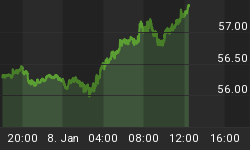An interesting chart from the Bank of Japan's latest monthly economic report.
Japanese capacity utilization is way down. Around 20% of manufacturing facilities are standing idle.
This is an improvement from the beginning of 2009, when 35% of capacity was shut down. But a marked decrease from pre-financial-crisis levels, when there was almost no excess capacity to be found.

The story is much the same throughout the rest of the developed world. Capacity utilization across the OECD countries is down 10 to 15% since the onset of the financial crisis.
Part of the problem is we had a big build-out in industrial production between 2003 and 2008. During those years, OECD industrial production jumped by over 15%.
The global economic downturn has brought nations like the U.S., Canada, Germany and Japan back to pre-2003 industrial production levels. In other countries the situation is worse. Industrial production in Britain, France and Italy is currently the lowest since the early 1990s.
The upshot is we built a lot of factories during the supercharged economic times up until the crash in 2008. Consumers were happy, everyone was buying. The global economy could support this increased output.
Now consumers have re-trenched. American consumer savings are up $700 billion over the past year alone. This is a lot of money no longer being used to purchase stuff.
The question now is, what to do with all the capacity we built? Shutting it down permanently means loss of jobs, changes in trade balances and large dislocations in places that grew used to having these facilities as economic drivers.
But keeping excess capacity operating is deflationary. Too much output drives down prices, making it hard for businesses to turn a profit.
Practically, there may simply be no way to keep excess capacity running. If nobody's buying, there's no point making things.
This is going to be a bitter pill to swallow for developed economies and their workers who have built their budgets and lifestyles expecting to have these centers of industry to rely on. Some painful adjustments are going to be necessary.
By Dave Forest for OilPrice.com who offer detailed analysis on Crude oil, Natural Gas, Geopolitics, Gold and most other Commodities. They also provide free political and economic intelligence to help investors gain a greater understanding of world events and the impact they have on certain regions and sectors. Visit: http://www.oilprice.com
















